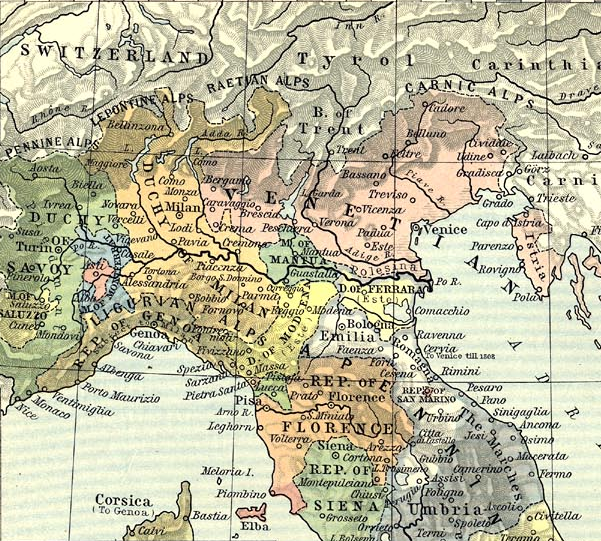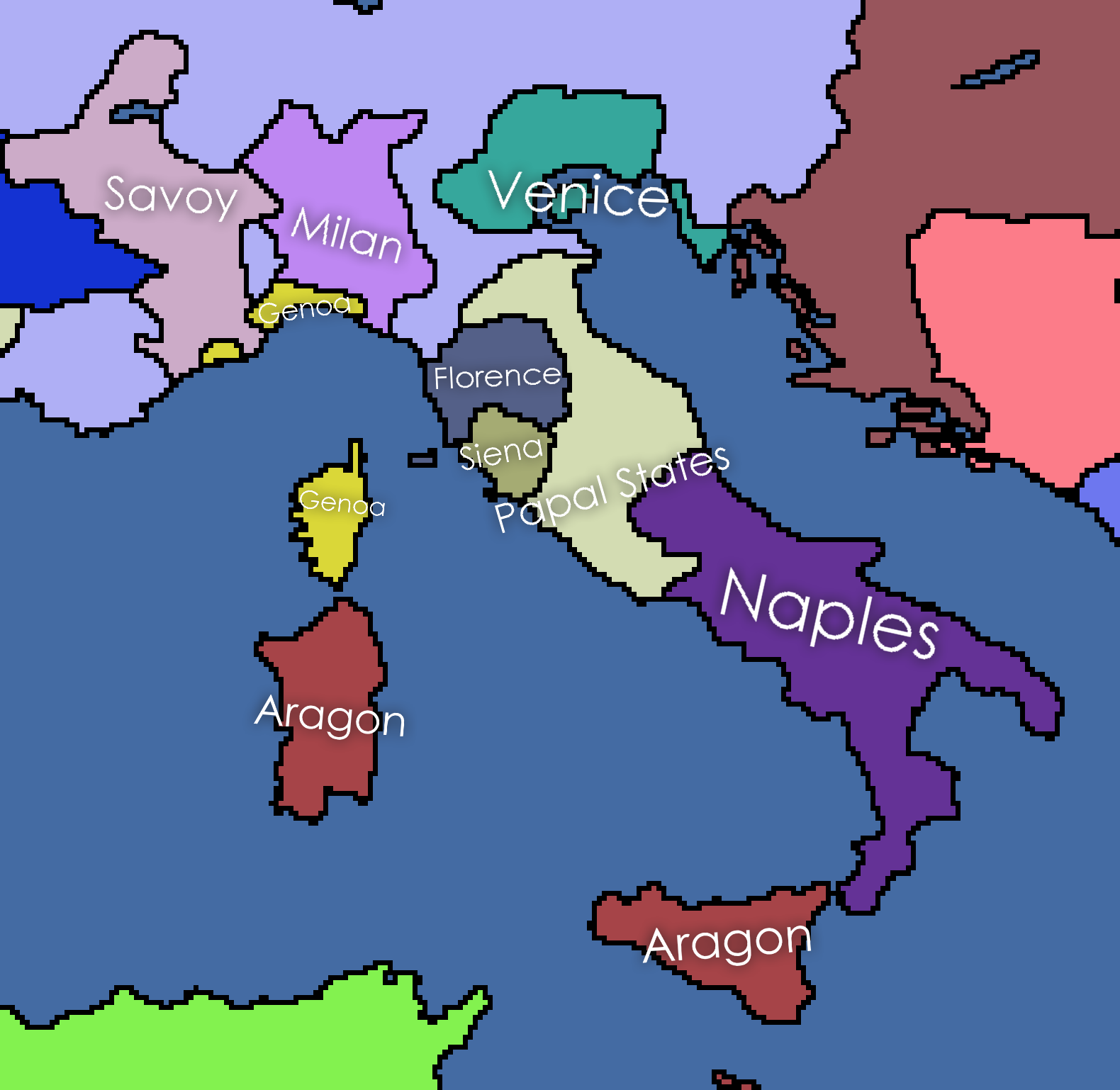|
Castle Of Pontevico
The Castle of Pontevico is a former fortification built at the height of the early Middle Ages in Pontevico, Province of Brescia, currently used as a neuropsychiatric institute. It has also been remodeled several times over the centuries, due to the continuous sieges suffered over time. It was completely rebuilt in 1844, and the current version dates from the second half of the 20th century. History The origins of the fortress With the Franks, Frankish conquest of the territory at the hands of Charlemagne, dating back to the 9th century, Feudalism, feudal struggles began (first between Diocese, bishoprics and then between Medieval commune, communes) and Pontevico found itself placed in an important strategic position along the course of the Oglio, Oglio River. The first construction of a castle dates back to the end of the 9th century due to the continuous raids carried out by the Hungarians at that time, being remembered in the chronicles of the time as a colossal strongho ... [...More Info...] [...Related Items...] OR: [Wikipedia] [Google] [Baidu] |
Pontevico
Pontevico (Brescian: ) is a ''comune'' in the province of Brescia in Lombardy. It is on the left bank of the river Oglio. As of 2021 Pontevico had a population of 7,038. Toponymy The name ''Pontevico'' derives from the Latin ''Pontis Vicus'', which means "town of the bridge", because the bridge had a great strategic importance: crossed by the ''Via Brixiana'' and built on the Oglio river, it connects the province of Brescia to the Cremona's. History Before the Roman-Gallic wars, Pontevico was inhabited by the Cisalpine Gauls. However, the town was probably founded under the Roman Empire: looking at the town from above, the centuriation of the original nucleus is clearly visible. Pontevico was crossed by the ''Via Brixiana'', a Roman consular road which connected Cremona ''(lat''. ''Cremona'') to Brescia (''lat. Brixia''), from which Roman roads passed and then branched out towards the entire Cisalpine Gaul. In the 6th century the navigation had a high importance, so Theo ... [...More Info...] [...Related Items...] OR: [Wikipedia] [Google] [Baidu] |
Early Middle Ages
The Early Middle Ages (or early medieval period), sometimes controversially referred to as the Dark Ages (historiography), Dark Ages, is typically regarded by historians as lasting from the late 5th to the 10th century. They marked the start of the Middle Ages of History of Europe, European history, following the decline of the Roman Empire, decline of the Western Roman Empire, and preceding the High Middle Ages ( 11th to 14th centuries). The alternative term ''Late antiquity#Terminology, late antiquity'', for the early part of the period, emphasizes elements of continuity with the Roman Empire, while ''Early Middle Ages'' is used to emphasize developments characteristic of the earlier medieval period. The period saw a continuation of trends evident since late classical antiquity, including population decline, especially in urban centres, a decline of trade, Medieval Warm Period, a small rise in average temperatures in the North Atlantic region and Migration Period, increased m ... [...More Info...] [...Related Items...] OR: [Wikipedia] [Google] [Baidu] |
Fortification
A fortification (also called a fort, fortress, fastness, or stronghold) is a military construction designed for the defense of territories in warfare, and is used to establish rule in a region during peacetime. The term is derived from Latin ("strong") and ("to make"). From very early history to modern times, defensive walls have often been necessary for cities to survive in an ever-changing world of invasion and conquest. Some settlements in the Indus Valley Civilization were the first small cities to be fortified. In ancient Greece, large cyclopean stone walls fitted without mortar had been built in Mycenaean Greece, such as the ancient site of Mycenae. A Greek ''Towns of ancient Greece#Military settlements, phrourion'' was a fortified collection of buildings used as a military garrison, and is the equivalent of the ancient Roman, Roman castellum or fortress. These constructions mainly served the purpose of a watch tower, to guard certain roads, passes, and borders. Th ... [...More Info...] [...Related Items...] OR: [Wikipedia] [Google] [Baidu] |
War Of The League Of Cambrai
The War of the League of Cambrai, sometimes known as the War of the Holy League and several other names, was fought from February 1508 to December 1516 as part of the Italian Wars of 1494–1559. The main participants of the war, who fought for its entire duration, were Early modern France, France, the Papal States, and the Republic of Venice; they were joined at various times by nearly every significant power in Western Europe, including Spain, the Holy Roman Empire, Kingdom of England, England, the Duchy of Milan, the Republic of Florence, the Duchy of Ferrara, and the Swiss mercenaries, Swiss. The war started with the ''Italienzug'' of Maximilian I, Holy Roman Emperor, Maximilian I, King of the Romans, crossing into Venetian territory in February 1508 with his army on the way to be Coronation of the Holy Roman Emperor, crowned Holy Roman emperor by the pope in Rome. Meanwhile, Pope Julius II, intending to curb Venetian influence in northern History of Italy during foreig ... [...More Info...] [...Related Items...] OR: [Wikipedia] [Google] [Baidu] |
Italian Wars Of 1499–1504
The Italian Wars of 1499–1504 are divided into two connected, but distinct, phases: the Second Italian War (1499–1501), sometimes known as Louis XII's Italian War, and the Third Italian War (1502–1504) or War over Naples. The first phase was fought for control of the Duchy of Milan by an alliance of Louis XII of France and the Republic of Venice against Ludovico Sforza, the second between Louis and Ferdinand II of Aragon for possession of the Kingdom of Naples. In the aftermath of the Italian War of 1494–1498, Louis was determined to pursue French claims to Milan and Naples and in October 1499 he captured Milan, which remained in French hands for the next thirteen years. His invasion of Naples in 1501 eventually led to war with Ferdinand of Aragon, who expelled the French in 1504. Timeline This is an overview of notable events including battles during the wars. ;Prelude (1498–1499) * 7 April 1498: Charles VIII of France died and was succeeded by his cousin Louis, ... [...More Info...] [...Related Items...] OR: [Wikipedia] [Google] [Baidu] |
War Of Ferrara (1482–1484)
The War of Ferrara (also known as the Salt War, Italian: ''Guerra del Sale'') was fought in 1482–1484 between Ercole I d'Este, Duke of Ferrara, and the forces mustered by Ercole's personal nemesis, Pope Sixtus IV and his Venetian allies. Hostilities ended with the Treaty of Bagnolo, signed on 7 August 1484. Diplomatic background The failure of the Pazzi conspiracy against Florence in 1480 and the unexpected peace resulting from Lorenzo de' Medici's daring personal diplomacy with Ferdinand I of Naples, the Pope's erstwhile champion, was a source of discontent among the Venetians and Pope Sixtus IV alike. With the Treaty of Constantinople of 1479, Venice had ended its long conflict with the Ottoman Turks, and was freed to turn its whole attention to its role in its '' terra firma'' (mainland) and to the peninsula of Italy more generally. In addition to the usual minor friction over strongholds along the borders, there was a contest over the commerce in salt, which was reserv ... [...More Info...] [...Related Items...] OR: [Wikipedia] [Google] [Baidu] |
Second Siege Of Pontevico
The second siege of Pontevico was fought between 25 and 29 May 1453 at Pontevico (Lombardy) between the armies of the Duchy of Milan and that of Republic of Venice, an episode of the Wars in Lombardy. Background During the fifth phase of the Wars in Lombardy, in June 1452 Pontevico has been besieged and occupied by Francesco Sforza, Duke of Milan. However, before the winter, the Venetian army passed the Oglio river. In March 1453, the Venetians commanded by Jacopo Piccinino started the reconquest of the ''Bassa Bresciana'', reaching the town on 25 May, when the Duke was in Cremona. Order of battle Duchy of Milan In the Castle of Pontevico was located a garrison of around 500 men. Republic of Venice Jacopo Piccinino could count on over 5000 infantrymen. Battle On 25 May Piccinino placed the bombards in front of the castle and he made his men camp along the two banks of the Oglio river, then he started the siege of the fortress. His intention was take the castle befo ... [...More Info...] [...Related Items...] OR: [Wikipedia] [Google] [Baidu] |
First Siege Of Pontevico
The first siege of Pontevico was fought between 6 and 8 June 1452 at Pontevico (Lombardy) between the armies of the Duchy of Milan and that of Republic of Venice, an episode of the Wars in Lombardy. Background During the Wars in Lombardy, Brescia and its province get conquered by the Republic of Venice. In 1448, Venice and Milan stipulated a truce: then, Francesco Sforza, a milanese commander, besieged Milan and took the power on February 26, 1452. Due to his past service for the Republic of Venice, he knew the strategic importance of Pontevico, located long the Oglio river and he decided to besiege his castle. Order of Battle Duchy of Milan Francesco Sforza could count on a big part of his army. Republic of Venice The venetian forces in Pontevico were exiguous. However, the people of Ponteviche, trusting in their own valor, wanted to attempt resistance in any way. Battle After having built a bridge over the river and set up a camp on both Oglio shores, on June 6 th ... [...More Info...] [...Related Items...] OR: [Wikipedia] [Google] [Baidu] |
Wars In Lombardy
The Wars in Lombardy were a series of conflicts between the Republic of Venice and the Duchy of Milan and their respective allies, fought in four campaigns in a struggle for hegemony in Northern Italy that ravaged the economy of Lombardy. They lasted from 1423 until the signing of the Treaty of Lodi in 1454. During their course, the political structure of Italy was transformed: out of a competitive congeries of communes and city-states emerged the five major Italian territorial powers that would make up the map of Italy for the remainder of the 15th century and the beginning of the Italian Wars at the turn of the 16th century. They were Venice, Milan, Florence, the Papal States and Naples. Important cultural centers of Tuscany and Northern Italy—Siena, Pisa, Urbino, Mantua, Ferrara—became politically marginalized. The wars, which were both a result and cause of Venetian involvement in the power politics of mainland Italy, found Venetian territory extended to the ba ... [...More Info...] [...Related Items...] OR: [Wikipedia] [Google] [Baidu] |
Battle Of Cortenuova
The Battle of Cortenuova (sometimes spelled Cortenova) was fought on 27 November 1237 in the course of the Guelphs and Ghibellines Wars: in it, Holy Roman Emperor Frederick II defeated the Second Lombard League. Background In 1235 Emperor Frederick was in Germany to quell the rebellion of his son Henry. In the autumn of that year he decided to return to Italy to suppress the Lombard communes which, backed by Pope Gregory IX, were contesting his authority. He arrived at Valeggio, near Verona, and, with the help of Ezzelino III da Romano and other Ghibelline leaders, sacked the city of Vicenza. Satisfied with this first outcome, he came back to Germany to deal with another German princes' rebellion, leaving Hermann von Salza, Grand Master of the Teutonic Order, in Italy to monitor the situation. In August 1237 the emperor returned again to Italy, this time aiming to definitively crush the Second Lombard League. He crossed the Alps to Verona and here his 2,000 knights were jo ... [...More Info...] [...Related Items...] OR: [Wikipedia] [Google] [Baidu] |




